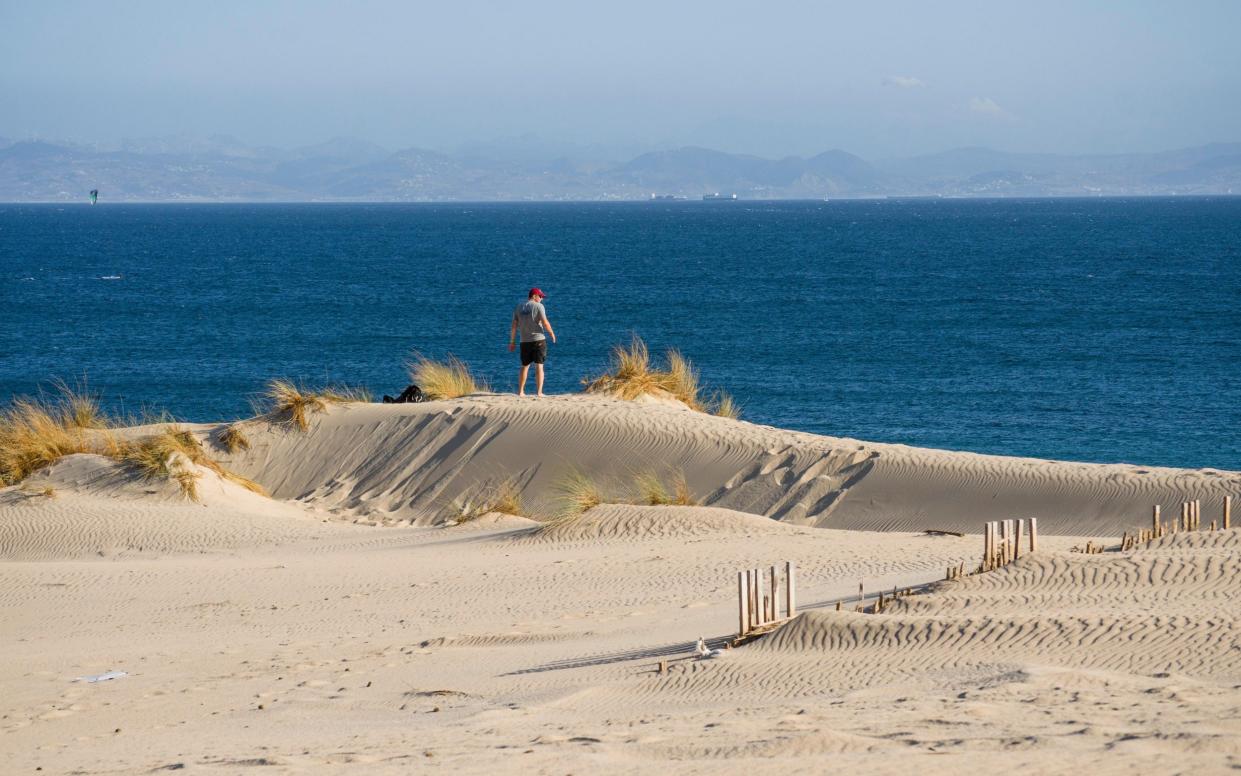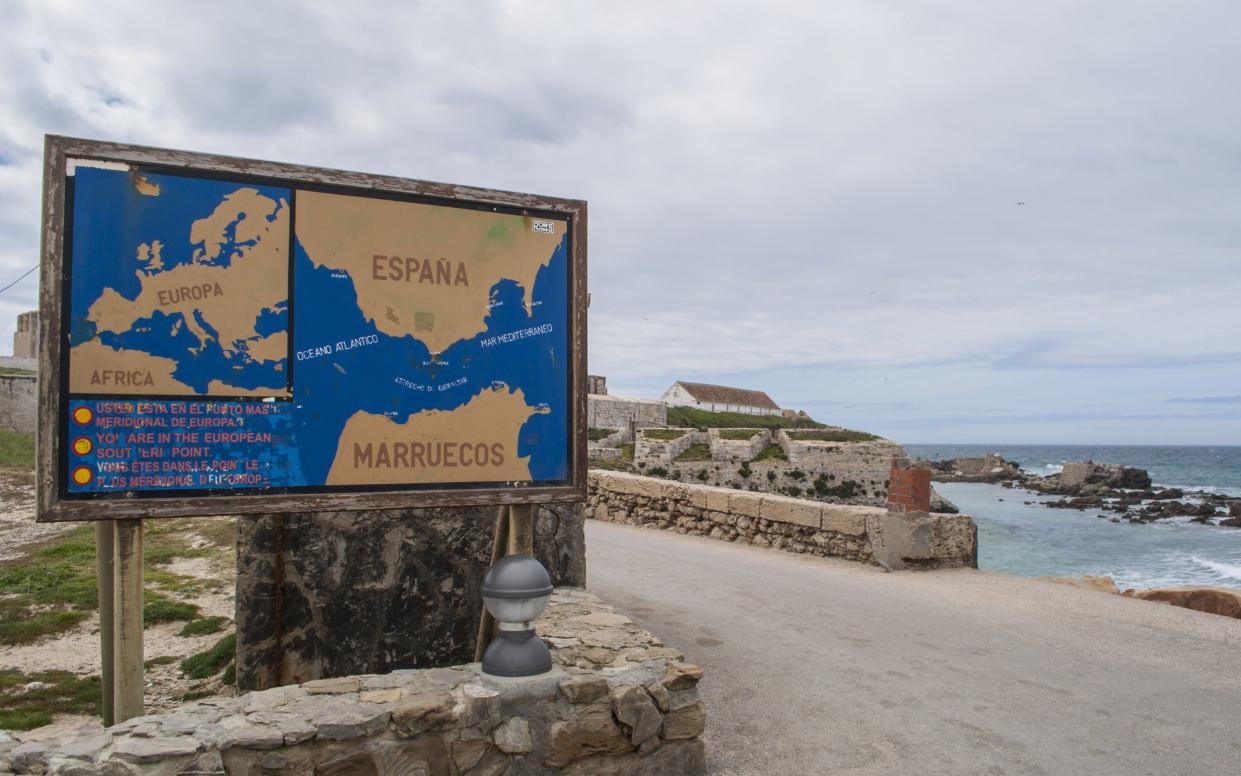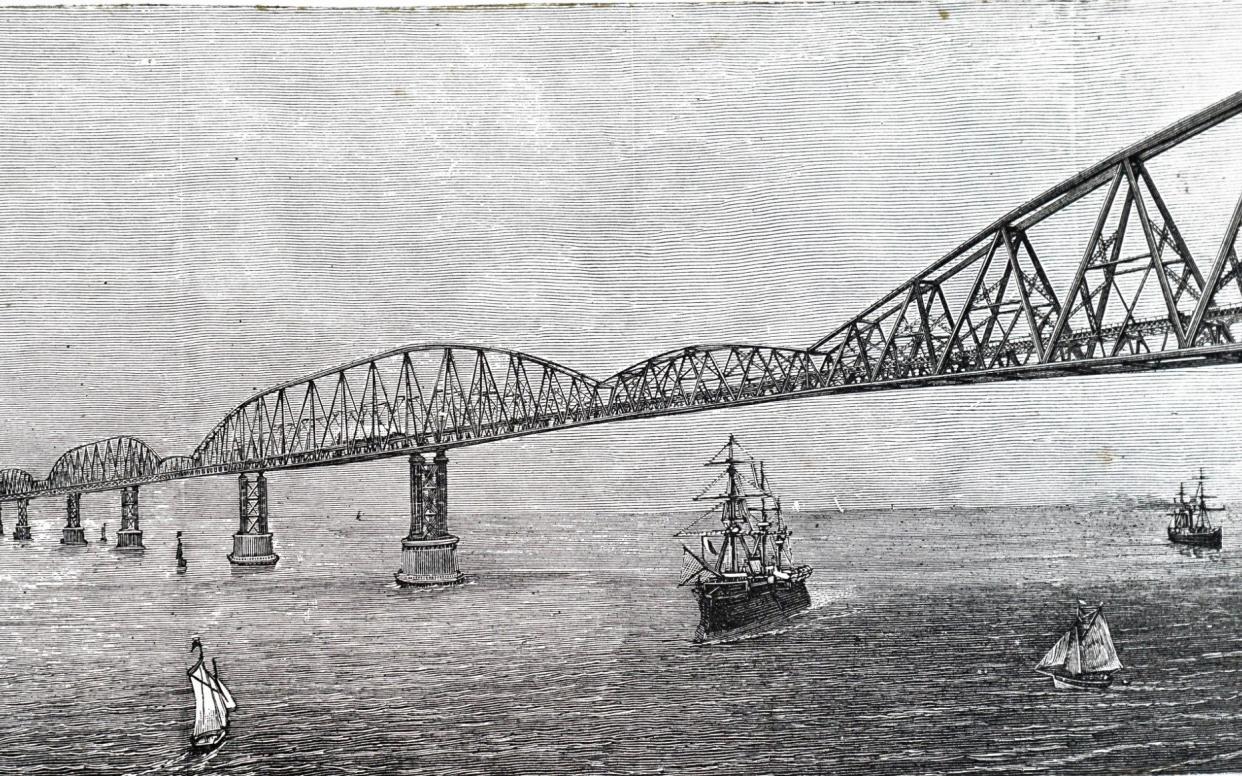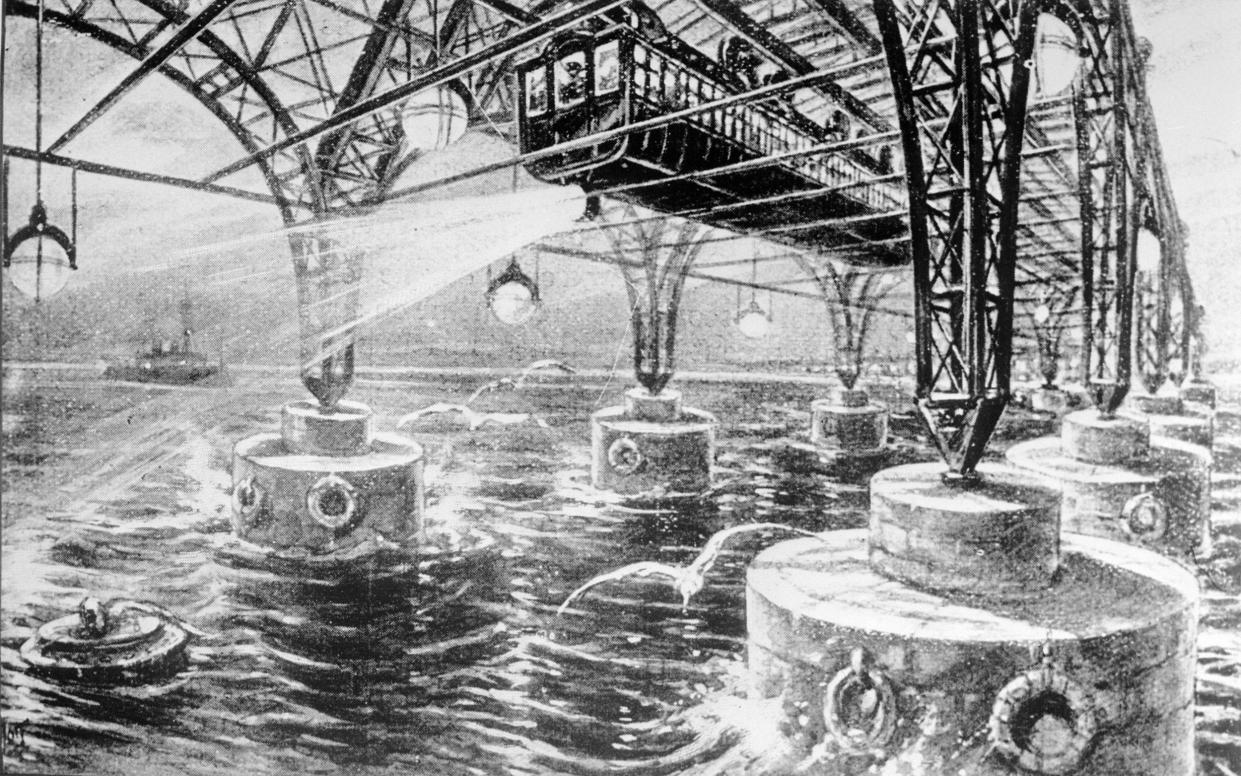The £6bn tunnel that could link Europe to Africa by 2030

A new underwater tunnel could link Spain to Morocco by the end of the decade, in time for the 2030 World Cup.
This week the Moroccan National Company for Strait Studies (SNED) said that work was underway to explore the financing and strategic elements of the project.
In March, the Moroccan minister of water and equipment, Nizar Baraka, met the Spanish transport minister, Oscar Puente, to discuss the matter.
The underwater section of the tunnel would span 17 miles (28km) at a maximum depth of 1,550ft (475m), connecting Punta Paloma, west of Tarifa, with Malabata in northern Morocco, just east of Tangier. It is unknown how much the construction of two tunnels (plus a third service tunnel) would cost, although some estimates put the project at €8 billion.

The Spanish Society for Fixed Communication Studies across the Strait of Gibraltar (SECEGSA) has predicted that the tunnel, which would link the railway networks of Spain and Morocco, could carry 12.8 million passengers per year. It would also be an important trade crossing, with the potential to transport 13 million tons of cargo between Africa and Europe, according to SECEGSA. It would reduce travel times between Madrid and Casablanca to just 5.5 hours. Currently, flights take around two hours, and driving - including a ferry crossing - eats up about 12 hours.
Plans have ramped up since Fifa announced that the 2030 World Cup would be held mainly in Portugal, Spain and Morocco.
The idea of a Strait of Gibraltar tunnel was first proposed by the Spanish government in 1930. However, the project was put on hold after engineers discovered that the seabed material was made up of extremely hard rock, making tunnelling impossible with the technology available at the time.
Even with engineering developments, the tunnel is still held up as one of the most ambitious undersea projects in the world, far more complex than the Channel Tunnel between England and France, which opened in 1994. The Azores–Gibraltar geologic fault sits nearby and a number of earthquakes have occurred in the region. An additional logistical challenge is that the shortest distance between the two continents is where the deepest section of the strait is, with depths of up to 2,950ft (900m).
Plans for the tunnel resurfaced in 1979, when the governments of Spain and Morocco appointed a joint committee to analyse the feasibility of the project, although the tunnel never came to fruition. The project has recently gained fresh traction after the opening of Morocco’s Al Boraq high-speed railway line connecting Casablanca with Tangier, the first of its kind in Africa.
There have been plenty of other ambitious engineering proposals in the past, including a bridge from Dover to Calais, one connecting Africa with Asia over the Red Sea between Egypt and Saudi Arabia, and – perhaps the most outlandish of them all – a vacuum tunnel connecting London to New York.
Here we take a look at some of the more unique bridges and tunnels that have been proposed, and dissect whether they could ever become a reality.
A bridge across the Channel?
Politicians have been talking about a possible bridge connecting the UK and France for more than 100 years now. In an 1889 edition of The Spectator, an article mentions engineers who were discussing the possibility of a “huge iron bridge across the Channel”. A blueprint of the bridge was presented at the 1889 World Expo in Paris.

“A detailed plan to this end … was read on Tuesday before the Iron and Steel Institute, assembled this year in Paris. The success of the enormous spans used at the Forth Bridge, 130ft above high-water mark, have shown the project to be by no means impossible,” read The Spectator report.
“The scheme, if ever carried out, will cost, it is calculated, about £34,000,000, a fact in itself enough to condemn the proposal, when a system of steam ferry-boats could be managed at a tenth of that sum.”

More recently, under Margaret Thatcher’s government, detailed plans were drawn up for a 21-mile toll bridge, suspended above the Channel at 219ft. The project came with an estimated price tag of around £3 billion and was calculated to raise a possible £220 million in tolls each year (drivers would have been charged £5.60 and lorries £8 for the pleasure of driving across it).
Most engineers agree that the bridge could be built, in principle; however, there are concerns about the cost of the project, and the possible knock-on effect that the bridge would have on shipping lanes in the Channel.
How long would it take?
The shortest distance across the Channel is from Dover to Cap Gris Nez – 20.7 miles, to be precise. Assuming a sustained driving speed of 70mph (and no traffic) you would be able to complete this crossing in just under 18 minutes.
Will it happen?
Don’t cancel your Eurostar ticket just yet.
A bridge from Africa to Asia?
After three decades of discussions, in 2016 Saudi Arabia’s King Salman announced that a bridge connecting Saudi Arabia to Egypt would be built over the Red Sea.
“I agreed with my brother, his Excellency President Abdel Fattah el-Sisi, to build a bridge connecting the two countries,” Salman proclaimed.
“This historic step to connect the two continents, Africa and Asia, is a qualitative transformation that will increase trade between the two continents to unprecedented levels.”
Details of where, exactly, the bridge would be built were not disclosed. At the closest point, Nabq in Egypt (just north of Shark el-Sheikh) is only 10 miles from Ras Alsheikh Hamid in Saudi Arabia. However, eight years since those bold announcements, there has been little update on the project.
A similar project crossing the Red Sea, from Djibouti to Yemen, has been proposed in the past. It was initially due for completion late 2020, but things have gone quiet in recent years (not a surprise given the volatile situation in Yemen).
How long would it take?
It is a mere 10 miles between Saudi Arabia and Egypt. Driving at the national speed limit of Saudi Arabia (86mph) you would be able to complete this crossing in just seven minutes.
Will it happen?
In recent years Saudi Arabia has invested heavily in grand infrastructural projects, and certainly has the funds for it, but the eight-year silence throws some doubt over the future of the bridge.
A tunnel from London to New York?
Perhaps one of the more fantastical proposals is a tunnel running beneath the Atlantic (and indeed much of the south of the UK), from London to New York.
Early suggestions date back to Michel Verne, the son of Jules Verne, who published a story named Un Express de l’avenir (An Express of the Future) in Strand Magazine in 1895. Another suggestion came in 1913, in a novel by German writer Bernhard Kellermann – this was the basis for the film Der Tunnel, which came out in 1933 with an English version in 1935.
Later, Robert H Goddard, the engineer credited with creating the first liquid-fuelled rocket, was issued two of his 214 patent requests for the idea. Arthur C Clarke, co-writer of 2001: A Space Odyssey, also mentioned the idea of intercontinental tunnels in his 1946 short story Rescue Party and in his novel The City and the Stars, published in 1956.
In April 2004, Popular Science released an investigation suggesting the idea of a transatlantic tunnel may not be as fanciful as previously thought, comparing the project with laying transatlantic pipes and cables along the seabed.
So how, exactly, would it work? In the Sixties, some began to theorise the idea of a vacuum tube, through which vehicles could travel at speeds of up to 5,000mph. More recently, the MIT researchers Ernst Frankel and Frank Davidson developed the idea of a high-speed transatlantic tunnel. In theory, they said, with a perfect vacuum you could reach speeds of 1,200mph.
The latest version of “vacuum travel”, Hyperloop, has been open-sourced by Elon Musk and SpaceX, encouraging others to develop the concept as a “fifth mode of transport”. At the moment, the top speed for a hyperloop train is predicted to reach around 760mph.
How long would it take?
The distance between London and New York is 3,466 miles, as the crow flies. Assuming a sustained driving speed limit of 70mph for the entire journey, it would take 49 hours. You’d need a fair few underwater service stations to make that bearable. On a high-speed train travelling at 160mph, it would take a more palatable 21 hours. On a hyperloop train, travelling at 760mph, it would take 4.5 hours.
Will it happen?
Frankly, not in our lifetime.
A bridge from Malaysia to Indonesia?
The Malacca Strait Bridge is a proposed crossing from Telok Gong in Malaysia to Rupat Island in Indonesia.
The idea has been put on, and then swiftly taken off, the table a number of times since it was first first proposed in 1996 by former Malaysian prime minister Tun Dr Mahathir Mohamad. In 2006 a mega project plan was proposed once again – with the Exim Bank of China agreeing to finance 85 per cent of the total cost. Alas, soon after, the plan was once again abandoned.
In 2013, the Malacca State Government revived the plan once again, but it hit another wall when the Indonesian president said a different bridge – connecting Sumatra to Java – was his priority.
Now, after years on pause, there is no plan of action from either Malaysian or Indonesian officials.
How long would it take?
The bridge would be 30 miles long, meaning that if you drive at the Malaysian speed limit of 68mph it would take 26 minutes. If you drive at the Indonesia speed limit of 62mph, it would take you 29 minutes.
Will it happen?
The project has been proposed, and fallen through, a number of times now. Interpret that as you will.